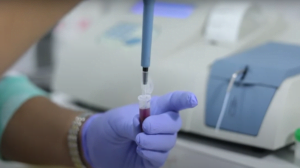The Hidden Danger in Our Water Bodies: Saxitoxin Poisoning

Between 2002 and 2004, 28 cases of Puffer fish poisoning (PFP) across Florida, New Jersey, Virginia, and New York were traced back to the Indian River Lagoon (IRL) in Florida. An investigation from the Environmental Protection Agency (EPA) revealed Saxitoxins (STXs) in three types of puffer fish species hailing from the IRL. Over the span of 36 months, The EPA detected these toxins in the skin, muscle, and viscera of these fish, with alarmingly high concentrations in the ovaries.
Understanding The Threat
Puffer fish poisoning (PFP), as some of you may know, is a serious health issue usually caused by the ingestion of tetrodotoxins (TTXs) that are naturally present in specific species of puffer fish. An alarming number of people succumb to this poisoning annually, even in countries like Japan, where regulations are exceptionally stringent. The consequences of consuming TTXs can be fatal, inducing symptoms akin to paralytic shellfish poisoning (PSP), another hazardous condition caused by saxitoxins (STXs).
What’s fascinating is that the saxitoxins, found in at least 12 species of both marine and freshwater puffer fish across Asia, have also begun to emerge in the United States. The bio-origin of these STXs in the puffer fish is yet to be determined, though they are suspected to have fed on STX-producing microalgae.
Notably, these toxins didn’t degrade even in puffer fish that was frozen for approximately nine months, demonstrating their impressive stability. This unsettling find has led to the confirmation of puffer fish as a hazardous reservoir of STXs in Florida’s marine waters.
The Perpetrator: Pyrodinium bahamense
The toxin culprit, we believe, is the dinoflagellate P. bahamense, previously associated with fatal PSP in the Pacific, but never before considered toxic in the western Atlantic. The presence of this microbe in the IRL and its links to the cases of PFP paint a clear picture of an emerging public health threat that needs immediate attention.
Today, we bring to your attention an escalating public health concern. It’s a stealthy threat that originates from the aquatic expanses surrounding us, yet is, astonishingly, still under the radar of the major government authorities like the EPA, the Food and Drug Administration (FDA), and the United States Department of Agriculture (USDA). The focus of this blog’s discourse is saxitoxin poisoning.
Safeguarding public health – The Testing Landscape
We’d like to emphasize the importance of meticulous surveillance of water bodies for saxitoxin contamination, an action paramount to safeguarding public health. As the need for comprehensive testing and monitoring continues to increase, our attention is drawn to the practical solutions currently accessible. Among these, one promising tool takes the spotlight – the Saxitoxin ELISA kit provided by Beingbio.
Various testing methodologies, encompassing the Mouse Bioassay (MBA), Receptor Binding Assay (RBA), Microplate Neuron Culture Assay (MNCA), and High-Performance Liquid Chromatography (HPLC) linked with Mass Spectrometry (LC-MS), are presently in use. These techniques have demonstrated critical utility in the detection of saxitoxins in a myriad of samples, such as pufferfish tissues, clonal cultures, and natural bloom samples of P. bahamense from the Indian River Lagoon.
Nevertheless, these traditional methods, while effective, can prove to be strenuous, time-intensive, and may demand significant technical prowess. Moreover, some of these tests, like the MBA, have been met with ethical controversy due to the utilization of live animals in the process.
Enter ELISA – A Game Changer
The Enzyme-Linked Immunosorbent Assay (ELISA), a universally acknowledged technique, proffers a cost-efficient, highly sensitive, and comparatively swift detection of saxitoxins. Its broad acceptance stems from its ability to process multiple samples simultaneously, thereby making it an ideal fit for large-scale screenings. Importantly, the ELISA method avoids the use of live animals, presenting an ethical alternative for toxin detection.

Key benefits of utilizing ELISA test kits for saxitoxin detection in an environmental testing lab include:
- High sensitivity: ELISA can detect even minute amounts of saxitoxin in a given sample, ensuring that even trace contamination is identified.
- Cost-effective: Compared to other testing methods like LC-MS, ELISA kits are a more affordable option, making regular testing financially feasible.
- Speed: ELISA delivers results in a shorter timeframe than many traditional methods, aiding in swift intervention and management when saxitoxin is detected.
- Scalability: ELISA kits can accommodate multiple samples at once, making them suitable for large-scale environmental testing.
- No ethical dilemmas: ELISA avoids the use of live animals, thus circumventing any associated ethical concerns.
Saxitoxin ELISA Kit: A Niche Solution
Among the ELISA kits on offer, Beingbio’s Saxitoxin ELISA kit is a standout. This kit, an offshoot of advanced biotechnology, has been explicitly formulated to detect saxitoxin in water samples. The kit functions through a competitive binding technique, where the saxitoxin in the sample competes with a saxitoxin-horseradish peroxidase conjugate for the binding sites on the antibodies coated on the wells of the microplate.
With Beingbio’s Saxitoxin ELISA kit, environmental testing labs can enjoy swift, dependable, and accurate saxitoxin detection, enabling immediate action in case of any alarming results. This kit is user-friendly, allowing technicians with varying expertise levels to use it efficiently.
The simplicity of the ELISA method allows lab technicians to perform the tests without intensive training. The step-by-step instructions are clear and straightforward, making the handling of ELISA kits a breeze, even for novice technicians. Furthermore, Beingbio provides comprehensive customer support, ensuring assistance is always at hand should any queries arise during the testing process.
Dr. Jane Smith, a senior scientist at Metro Environmental Lab, attests to the ease of use of the Beingbio’s Saxitoxin ELISA kit, stating, “The intuitive nature of the kit made it very easy for our technicians to adapt to it. The fact that it doesn’t require extensive training is definitely a huge plus.” Similarly, Dr. Tom Anderson, a lab technician at Pacific Water Testing, praised the kit for its precision, saying, “We were amazed at how accurate and reliable the results from the Beingbio’s ELISA kit were. It truly is a game-changer for us.”
Summary
The potential threats posed by saxitoxin and its sources continue to grow, putting our public health at increasing risk. Effective detection techniques are our strongest defense in this situation. Tools like Beingbio’s Saxitoxin ELISA kit equip our environmental testing labs to stay a step ahead and ensure the safety of our waters and the public.
However, the responsibility doesn’t just lie with our government and scientific communities. As informed citizens, it’s crucial for us to support these initiatives and encourage the widespread adoption of these technologies. Let’s continue to advocate for a safe, healthy, and saxitoxin-free future! Stay tuned for more enlightening discussions on public health and scientific solutions.

